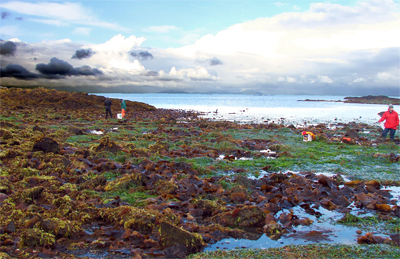Only 22% of Americans agree that “college costs in general are such that most people are able to afford to pay for a college education.” (Pew Research Center)
APU provides Alaskans with a quality, private liberal arts educational experience for an average net price of $15,000 per year (that’s the same price Alaskans pay for the WUE discounted rate at the flagship public university in Washington). If the student qualities for the Governor’s Promise Scholarship award, they could pay as little as $11,000/year.
And APU is 2763 miles closer to home.
If the Alaska student enters APU as a high school senior through our Early Honors program (link) they can complete their college degree in three years.
In addition, the educational experience at APU is qualitatively different e.g., public universities nationwide are being forced to increase classes sizes as they struggle with the largest disinvestment in public higher education in the nation’s history. For example,
Compare…. introductory biology at a large west coast public flagship university (700 students: 1 faculty; more students in this one class that the entire student body of APU)
With introductory biology at APU (average APU class size is 10:1 student-faculty ratio)
Surveys of employers tell us that the areas they feel colleges need to focus on most include: written and oral communication (89%), critical thinking and analytical reasoning (81%), the application of knowledge and skills in real-world settings (79%), complex problem-solving and analysis (75%), ethical decision-making (75%), teamwork skills (71%), innovation and creativity (70%), and concepts and developments in science and technology (70%). (AACU)
These are precisely the areas wherein APU excels.
Thomas Cronin, in a recent J. Thomas Wren edited text Leadership and the Liberal Arts, defined liberal arts as the “liberating arts-freeing us from prejudice, dogmatism, and parochialism, from complacency, sentimentality, and hypocrisy, from sloppy reasoning and careless writing.”
Freedom from isms and sloppiness is a compelling way to define the liberal arts, especially in the throes of a national presidential campaign. Paradoxically, at APU we have the freedom to define liberal arts in ways that excite the passions, clash, connect, and grow neurons (deep learning), and to do so in the context of the magnificent Alaska setting that is our classroom. We have the freedom to experiment with the best practices in teaching and learning-student engagement in active learning communities, personalized instruction, rich student/faculty interactions in small classrooms, high levels of academic challenge, honoring multiple intelligences, and real world, relevant, applied research in field-based settings. We have the freedom to teach students who will make a difference in their worlds.
The development of APU’s pre-medicine tract this fall is a strong affirmation of our belief that a liberal arts curriculum is the most effective form of education for future professionals whether it is in medicine, law, education, business, marine biology, etc.
Nannerl O. Keohane, in a keynote address to the Council of Independent College presidents, notes a “surge of interest” in liberal education in “many other countries” citing a major address in London by Yale’s Richard Levin wherein he observes that “Asian leaders are increasingly attracted to the American model of undergraduate curriculum….specifically because of the two years of breadth and depth in different disciplines provided before a student chooses an area of concentration or embarks on professional training.

